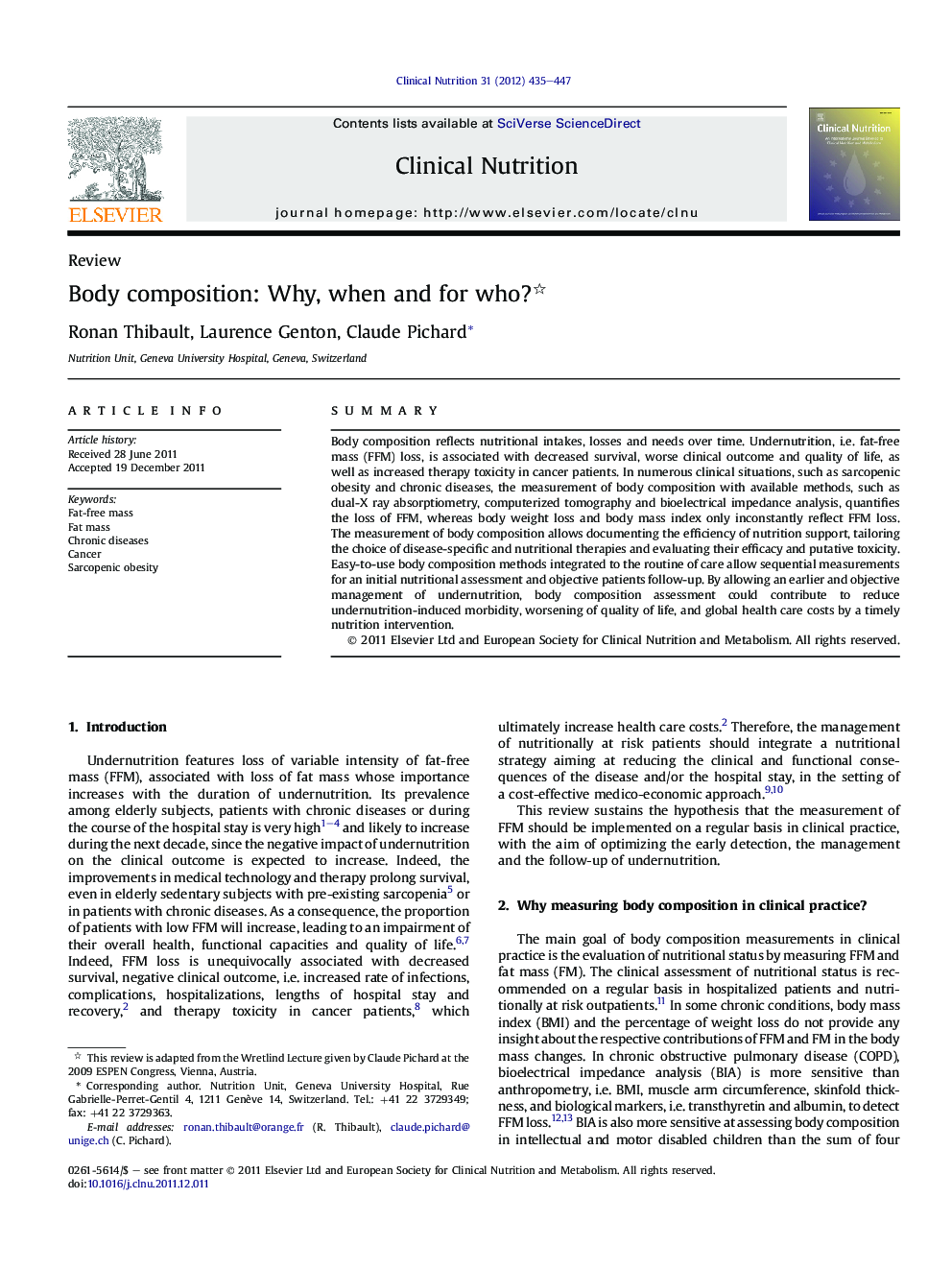| Article ID | Journal | Published Year | Pages | File Type |
|---|---|---|---|---|
| 5872088 | Clinical Nutrition | 2012 | 13 Pages |
Abstract
Body composition reflects nutritional intakes, losses and needs over time. Undernutrition, i.e. fat-free mass (FFM) loss, is associated with decreased survival, worse clinical outcome and quality of life, as well as increased therapy toxicity in cancer patients. In numerous clinical situations, such as sarcopenic obesity and chronic diseases, the measurement of body composition with available methods, such as dual-X ray absorptiometry, computerized tomography and bioelectrical impedance analysis, quantifies the loss of FFM, whereas body weight loss and body mass index only inconstantly reflect FFM loss. The measurement of body composition allows documenting the efficiency of nutrition support, tailoring the choice of disease-specific and nutritional therapies and evaluating their efficacy and putative toxicity. Easy-to-use body composition methods integrated to the routine of care allow sequential measurements for an initial nutritional assessment and objective patients follow-up. By allowing an earlier and objective management of undernutrition, body composition assessment could contribute to reduce undernutrition-induced morbidity, worsening of quality of life, and global health care costs by a timely nutrition intervention.
Related Topics
Health Sciences
Medicine and Dentistry
Critical Care and Intensive Care Medicine
Authors
Ronan Thibault, Laurence Genton, Claude Pichard,
